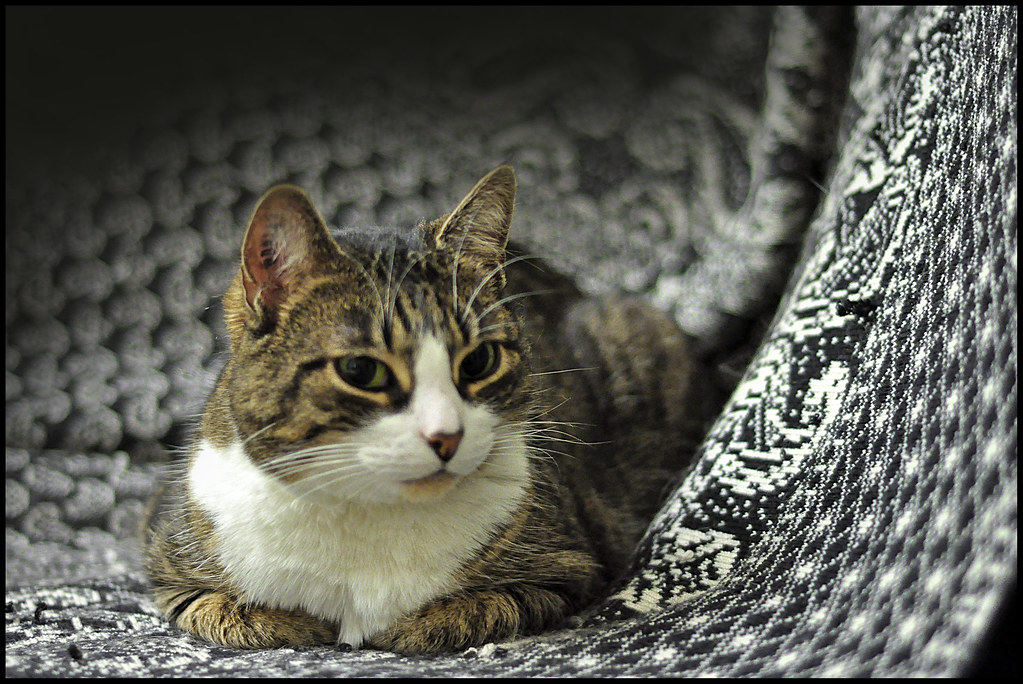As a pet owner, it’s your responsibility to ensure your feline friend stays happy and healthy. Cats are notorious for hiding their discomfort, making it crucial to recognize subtle signs that something might be wrong. In this article, we’ll uncover six key indicators that your cat needs a trip to the vet. Your furry companion may not be able to tell you directly, but with a keen eye, you can catch these signals early and ensure they get the care they need.
What are common emergency symptoms in cats?
One common emergency symptom in cats is difficulty breathing. This can manifest as rapid, shallow breathing, open-mouth breathing, or wheezing. Respiratory distress can be a sign of serious conditions such as asthma, heart disease, or lung infections, and requires immediate veterinary attention. Another critical sign is sudden lethargy or collapse. If your cat is unusually weak, unresponsive, or has trouble standing, it could indicate severe underlying issues like heart problems, poisoning, or metabolic disorders. Prompt veterinary care is essential to determine the cause and begin treatment.
Severe vomiting or diarrhea, especially if it is persistent or accompanied by blood, is another emergency symptom. These conditions can lead to rapid dehydration and may be indicative of gastrointestinal obstructions, infections, or toxins. Immediate veterinary intervention is necessary to prevent further complications. Unexplained bleeding, whether it is from a wound, in the urine, or in the stool, is a serious concern. This could be a sign of trauma, internal injuries, or clotting disorders. Quick veterinary evaluation is crucial to identify the source of bleeding and initiate appropriate treatment.
Seizures or sudden neurological changes, such as disorientation, uncoordinated movements, or head tilting, are alarming symptoms that require urgent veterinary care. These could be caused by epilepsy, brain tumors, or exposure to toxins, and need immediate medical assessment to manage the condition effectively. Straining to urinate or defecate, or complete inability to do so, is a critical emergency. This can indicate urinary blockages, severe constipation, or other serious conditions that can quickly become life-threatening. Immediate veterinary attention is necessary to relieve the blockage and address the underlying cause.
How can changes in a cat’s behavior indicate health issues?
Cats are creatures of habit, and any sudden or drastic change in their behavior can be a red flag for underlying health issues. For instance, if a typically social and affectionate cat becomes withdrawn or hides more often, it could be experiencing pain or discomfort. Behavioral changes like these should not be ignored, as they can be early indicators of serious conditions such as infections, injuries, or even chronic diseases. A noticeable change in a cat’s eating habits can also signal health problems. If your cat suddenly loses interest in food or, conversely, becomes ravenous, it might be dealing with gastrointestinal issues, dental problems, or metabolic disorders like hyperthyroidism. Persistent changes in appetite warrant a visit to the vet to rule out any serious conditions.
Litter box habits are another critical area to monitor. An increase or decrease in urination or defecation, straining to urinate, or the presence of blood in the urine can indicate urinary tract infections, kidney disease, or bladder stones. These conditions can escalate quickly and become life-threatening, making immediate veterinary attention essential. Changes in grooming behavior can also be a sign of health issues. Cats are meticulous groomers, and a sudden decline in grooming can indicate pain, arthritis, or obesity, which makes it difficult for them to reach certain areas. Conversely, over-grooming or excessive licking can be a sign of skin conditions, allergies, or stress. Both scenarios require a vet’s evaluation to determine the underlying cause.
Alterations in vocalization patterns can provide clues about a cat’s health. If a usually quiet cat starts meowing excessively or a vocal cat becomes unusually silent, it could be experiencing pain, anxiety, or cognitive dysfunction. These changes in communication should be taken seriously and discussed with a veterinarian. Lastly, changes in a cat’s activity level can be indicative of health issues. A normally active cat that becomes lethargic or a sedentary cat that suddenly becomes hyperactive may be dealing with conditions ranging from infections and anemia to hyperthyroidism or heart disease. Monitoring your cat’s energy levels and seeking veterinary advice for any significant changes is crucial for maintaining their health.
What physical signs suggest a cat is in pain?
One of the most noticeable physical signs that a cat is in pain is a change in their posture. Cats in pain may hunch their backs, tuck their limbs under their bodies, or lie in unusual positions to avoid putting pressure on the painful area. They might also be less willing to move or jump, showing a general reluctance to engage in their usual activities. Alterations in grooming behavior can also indicate pain. Cats in discomfort may either over-groom a specific area to the point of causing bald spots or skin irritation, or they may neglect grooming altogether, leading to a matted or unkempt coat. This change in grooming habits is often a response to localized pain or overall discomfort.
Changes in appetite and drinking habits are another red flag. A cat in pain might eat or drink less than usual, or they might stop eating and drinking altogether. This can lead to rapid weight loss and dehydration, which are serious concerns that require immediate veterinary attention. Vocalizations can be a clear indicator of pain. Cats may become more vocal, emitting growls, hisses, or yowls, especially when touched or moved. Conversely, some cats may become unusually quiet if they are in pain, withdrawing from social interactions and hiding more frequently.
Altered breathing patterns can also suggest pain. A cat in pain might breathe more rapidly or shallowly, and you might notice them panting or having difficulty breathing. These changes can indicate severe pain or distress and should be addressed by a veterinarian promptly. Finally, changes in litter box habits can be a sign of pain. Cats may have difficulty getting in and out of the litter box, leading to accidents outside the box. They might also strain to urinate or defecate, or you might notice blood in their urine or stool. These symptoms can indicate pain related to urinary or gastrointestinal issues.
| Symptom | Possible Health Issue | Recommended Action |
|---|---|---|
| Rapid or shallow breathing | Severe pain, respiratory distress | Consult a vet immediately |
| Panting or difficulty breathing | Severe pain, distress | Arrange an urgent vet visit |
| Accidents outside the litter box | Difficulty in movement, pain | Schedule a vet appointment |
| Straining to urinate or defecate | Urinary or gastrointestinal issues | Seek veterinary attention |
| Blood in urine or stool | Possible internal issues | Visit a vet as soon as possible |
Are there specific symptoms that require immediate veterinary attention?
One critical symptom that requires immediate veterinary attention is difficulty breathing. If your cat is panting, wheezing, or showing signs of labored breathing, it could indicate a serious respiratory issue, such as asthma, heart disease, or a respiratory infection. Immediate veterinary intervention is crucial to diagnose and treat the underlying cause. Another alarming sign is sudden and severe lethargy. While cats are known for their love of naps, a drastic change in energy levels, where your cat is unusually inactive or unresponsive, can be a red flag. This could be a symptom of various conditions, including infections, metabolic disorders, or even poisoning, and warrants prompt veterinary evaluation.
Persistent vomiting or diarrhea is also a cause for concern. While occasional digestive upset can be normal, continuous vomiting or diarrhea can lead to severe dehydration and indicate underlying issues such as gastrointestinal blockages, infections, or systemic illnesses. Immediate veterinary care is essential to prevent complications and determine the cause. If your cat is experiencing difficulty urinating or shows signs of distress while using the litter box, this is an urgent issue. Straining to urinate, producing only small amounts of urine, or blood in the urine can be symptoms of urinary tract infections, blockages, or bladder stones. These conditions can rapidly become life-threatening and require swift veterinary intervention.
Seizures or sudden neurological changes are also emergency situations. If your cat experiences a seizure, sudden loss of balance, disorientation, or uncoordinated movements, it could be indicative of neurological disorders, toxin ingestion, or other serious health issues. Immediate veterinary attention is necessary to stabilize your cat and identify the cause. Lastly, any signs of severe pain or distress should not be ignored. If your cat is vocalizing excessively, hiding, showing aggression, or displaying other behaviors indicative of pain, it could be suffering from a serious injury, dental issues, or internal problems. Prompt veterinary care is essential to alleviate pain and address the underlying condition.
How do cats typically show they are unwell?
Cats are known for their ability to hide illness, a trait inherited from their wild ancestors to avoid appearing vulnerable to predators. However, one of the primary indicators that a cat is unwell is a noticeable change in behavior. This can include increased aggression, hiding more than usual, or becoming unusually clingy. Behavioral changes are often the first sign that something is wrong. Another significant sign is a change in appetite or drinking habits. A cat that suddenly stops eating or drinking, or conversely, starts consuming much more than usual, could be experiencing a health issue. Weight loss or gain, vomiting, and diarrhea are also red flags that should not be ignored.
Lethargy or a decrease in activity levels can also indicate that a cat is not feeling well. Cats are generally active and curious creatures, so if your cat is sleeping more than usual, seems disinterested in play, or is reluctant to move, it might be a sign of illness or pain. Changes in grooming behavior can be another indicator. Cats are meticulous groomers, so if you notice your cat is grooming excessively, to the point of creating bald spots or sores, or if it stops grooming altogether and its coat becomes unkempt, it could be a sign of underlying health issues.
Respiratory changes are also important to watch for. If your cat is coughing, sneezing, has nasal discharge, or is breathing with difficulty, these symptoms could indicate respiratory infections, allergies, or more serious conditions like asthma or heart disease. Lastly, pay attention to your cat’s litter box habits. Straining to urinate, frequent trips to the litter box with little output, blood in the urine or stool, or sudden changes in bowel movements can all be signs of urinary tract infections, kidney disease, or gastrointestinal problems. Any of these symptoms warrant an immediate visit to the vet.
Conclusion
By keeping a close eye on these indicators, you can ensure your feline friend stays happy and healthy. Regular check-ups and prompt veterinary care not only help address immediate issues but also prevent future health problems. Remember, your cat relies on you to notice these subtle signs and take action.
Overall, your attentiveness and care are the best tools in ensuring your cat’s well-being. If in doubt, it’s always better to err on the side of caution and consult your vet. Your furry companion will thank you for it! Stay proactive, and here’s to many more years of your cat’s purrs and playful antics!



